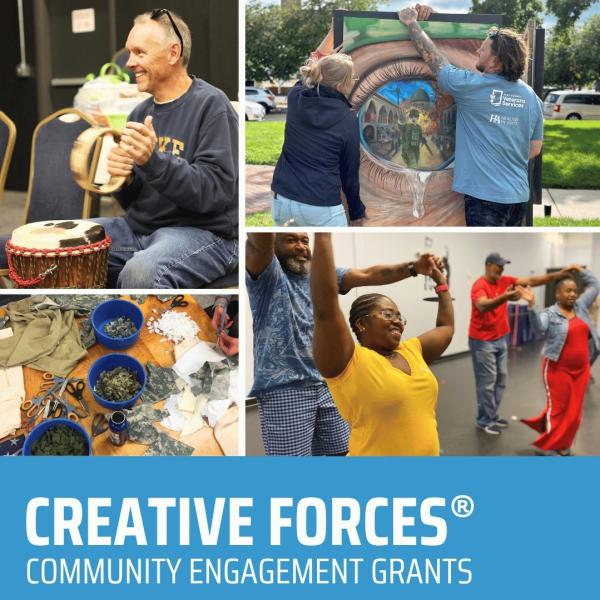New Report Examines Values and Needs of Artists

Washington, DC—Addressing the needs of artists in a world of accelerating change is the focus of a new report launched by the National Endowment for the Arts as part of the NEA Chairman’s 50th anniversary Creativity Connects* initiative. Creativity Connects: Trends and Conditions Affecting U.S. Artists was produced in collaboration with the Center for Cultural Innovation (CCI). It examines issues familiar to the arts world such as funding and training, but also widens the lens to look at the effect of other forces shaping the work environment for artists including technology, the gig economy, student debt, and the growth of cross-disciplinary work.
Accompanying the report is a new ‘Bright Spots’ interactive graphic on the NEA website featuring resources and successful projects undertaken by partnerships of arts and non-arts organizations that demonstrate new ways in which creative people are working. The projects can be sorted by arts sector, non-arts sector, and by state.
Chairman Chu said, “This report is practical and well-informed, providing insights and implications for action that together can advance our nation’s creative future. We thank the Center for Cultural Innovation for their work and look forward to sharing the report with our colleagues and those interested in welcoming artists to their sectors to share their creative practices and inspire innovation.”
Angie Kim, president and CEO of the Center for Cultural Innovation said that CCI, “is proud to partner with the National Endowment for the Arts on this seminal research. The arts sector is not alone in undergoing seismic shifts, but many of these shifts have opened up exciting new opportunities for artists to be at the center of social change. The Creativity Connects report describes what needs to be done to expand artists’ potential contributions."
Report Findings
The report is divided into three sections, each with its own set of conclusions.
- Shifts in the Artist Population and the Ways Artists Work
- Technology, Economics, Equity, and Training
- Implications of this Research
- Articulate and measure the benefits of artists and creative work to societal health and well-being.
- Address artists’ income insecurity as a part of larger workforce efforts.
- Address artists’ student debt and help build their assets.
- Create 21st-century training systems.
- Upgrade systems and structures that support artists.
- Partnerships: Supporting the work of our partners such as the state arts agencies as they prepare their own roundtables.
- Research: The report identified areas for future research which the NEA’s Office of Research and Analysis will use to select new projects to pursue.
- Convening: On Friday, November 18, the NEA will host a national convening, In Pursuit of the Creative Life: the Future of Arts and Creativity in America at the John F. Kennedy Center for the Performing Arts in Washington, DC featuring artists, arts leaders, and creative thinkers from around the country. Portions of the event will be live-streamed. More information will be available in October.
Chairman Jane Chu's post on the Art Works blog, Toward a Creative Future
Arts And Fact Sheets
Arts Data Profile #1: Equal Opportunity Data Mining: National Statistics about Working Artists
Contact
Victoria Hutter, hutterv@arts.gov, 202-682-5692




